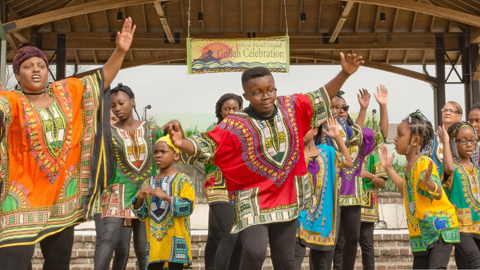Written By Joseph A. Opala
The Gullah people are the descendants of the slaves who worked on the rice plantations in South Carolina and Georgia.
They still live in rural communities in the coastal region and on the Sea islands of those two states, and they still retain many elements of African language and culture.
Anyone interested in the Gullah must ask how they have managed to keep their special identity and so much more of their African cultural heritage than any other group of Black Americans. The answer is to be found in the warm, semitropical climate of coastal South Carolina and Georgia; in the system of rice agriculture adopted there in the 1700s; and in a disease environment imported unintentionally from Africa.
These factors combined almost three hundred years ago to produce an atmosphere of geographical and social isolation among the Gullah which has lasted, to some extent, up until the present day.
The climate of coastal South Carolina and Georgia was excellent for the cultivation of rice, but it proved equally suitable for the spread of tropical diseases.
The African slaves brought malaria and yellow fever which thrived on the swampy coastal plain and especially around the flooded rice plantations.
The slaves had some inherited resistance to these tropical diseases, but their masters were extremely vulnerable. The white planters moved their houses away from the rice fields and adopted the custom of leaving their farms altogether during the rainy summer and autumn months when fever ran rampant.
The plantations were run on a day-to-day basis by a few white managers assisted, quite often, by certain talented and trusted slaves working as foremen or “drivers”.

The white population in the region stayed relatively low, but the importation of African slaves increased as the rice plantation system expanded and generated more and more profits.
By 1708, there was a black majority in South Carolina, a unique situation among the North American Colonies.
A European arriving in Charlestown in the 1730s remarked that “Carolina looks more like a negro country than a country settled by white people.”
The Gullah slaves in coastal South Carolina and Georgia lived in a very different situation from that of slaves in other North American colonies.
The Gullahs had little contact with whites. They experienced a largely isolated community life on the rice plantations, and their isolation and numerical strength enabled them to preserve a great many African cultural traditions.
By the early 1700s, the Gullah slaves were already bringing together distinctive language, rituals, customs, music, crafts, and diet drawing on the cultures of the various African tribes they represented.
The emergence of the Gullah was due, above all, to the isolation of black slaves in a disease environment hostile to whites and to their numerical predominance in the region—but another important factor was the continuing importation of slaves directly from Africa, and especially from the rice-growing areas along the West Coast.
The South Carolina and Georgia planters realized that the specialized nature of their crop required a constant influx of slaves born in Africa, not in the West Indies or in the neighboring colonies. So, a black community, already isolated from whites, was being constantly renewed by forced immigration from Africa.
The isolation of the Gullah community lasted throughout the period of slavery and continued even after the U.S. Civil War (1860-65) and the emancipation of the slaves.
The Gullahs on the mainland continued to work on the rice plantations as wage laborers after gaining their freedom, but the rice economy of South Carolina and Georgia collapsed after about 1890 due to competition with rice farmers farther west in Louisiana, Arkansas, and Texas.
By 1900, the rice plantations were all abandoned, and the fields were returning to swampland.
The Gullah people were left in an area of little commercial importance and of little interest to the outside world.
On the Sea Islands, the rice and cotton plantations were abandoned after the Civil War, leaving the Gullahs there in one of the most geographically isolated regions in the United States.
The first bridges were not built until the 1920s, and a decade later there were still adults on the islands who had never visited the U.S. mainland.

But World War II and the great changes in American life since then have had a profound impact on the Gullah community. Many people have found economic opportunities outside the area, and return only occasionally for holidays and family gatherings.
The Gullah people are no longer as isolated, and there is increasing influence through the media of American popular culture. But the Gullahs continue to regard themselves as a distinct community, and they continue to cherish their unique heritage.





